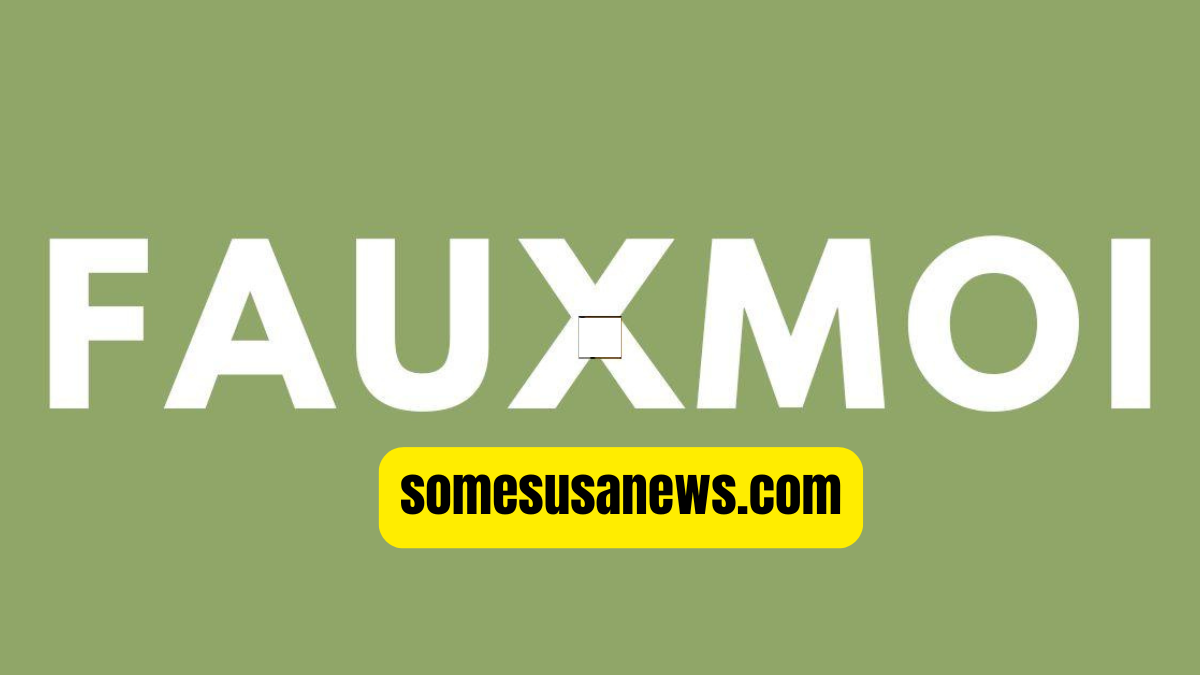fauxmoi In the ever-evolving digital age, trends come and go at lightning speed. One moment, everyone is talking about one thing, and the next, the conversation shifts. Among these trends, the term “Fauxmoi” has recently emerged as a buzzword captivating online communities. But what exactly is Fauxmoi, and why is everyone talking about it? Let’s explore this intriguing term and everything it entails.
What is Fauxmoi?
At its core, Fauxmoi is a play on words derived from the French language. “Faux” means “false,” and “moi” translates to “me,” creating a phrase that loosely means “fake me.” While the term’s origins might seem straightforward, its applications and interpretations are anything but.
In digital spaces, Fauxmoi often represents the curated, edited, or exaggerated versions of ourselves we present online. It’s the filtered photos, the perfectly crafted captions, and the “Instagram vs. reality” moments that showcase a heightened version of one’s life. But Fauxmoi isn’t just about aesthetics; it’s also a conversation starter about authenticity, identity, and the pressure to keep up appearances in the digital world.
The Rise of Fauxmoi: How It Became a Trend

Fauxmoi didn’t emerge in a vacuum. Its rise is deeply rooted in the cultural shift toward social media and the internet’s growing influence on our lives. Let’s break down the factors that propelled this term into mainstream conversations.
1. The Social Media Age: Social media platforms like Instagram, TikTok, and Twitter have created a space where people can present their lives in an idealized way. From picture-perfect travel photos to expertly edited reels, the content often highlights the best moments while omitting the struggles behind the scenes. Fauxmoi encapsulates this duality, shedding light on the disparity between what we show and what we truly are.
2. The Search for Authenticity: In recent years, there’s been a growing movement toward authenticity online. Influencers and content creators are now sharing unfiltered, “raw” content to connect with audiences on a deeper level. Fauxmoi serves as a reminder that even the most “real” content can still be curated to some extent.
3. Internet Culture and Memes: Let’s not forget the role of internet humor in popularizing Fauxmoi. The term has been used in memes and discussions, often poking fun at the extremes people go to maintain a particular image. Whether it’s a joke about someone’s over-edited profile picture or a viral video showing behind-the-scenes struggles, Fauxmoi is as much a part of the humor as it is a social commentary.
The Psychology Behind Fauxmoi
Understanding Fauxmoi requires diving into the psychological aspects of online behavior. Why do people feel compelled to create a “fake me” persona? And how does this impact mental health and self-esteem?
1. The Desire for Validation: Human beings are wired to seek approval from others. In the digital age, likes, comments, and shares have become modern-day currency for validation. Presenting an idealized version of oneself through Fauxmoi is often a way to gain that recognition and feel valued.
2. The Fear of Missing Out (FOMO): Fauxmoi and FOMO go hand in hand. Seeing others’ highlight reels can create a sense of inadequacy, leading individuals to fabricate their own polished narratives to keep up.
3. The Impact on Mental Health: While Fauxmoi might provide a temporary boost in self-esteem, it can also have long-term negative effects. Constantly comparing oneself to others or feeling the pressure to maintain a perfect image can lead to anxiety, depression, and a sense of disconnection from one’s authentic self.
How Fauxmoi Is Changing Online Interactions
The concept of Fauxmoi is not just a passive observation; it actively shapes how we interact online. From influencing content creation trends to sparking discussions about digital ethics, Fauxmoi is leaving its mark in several ways.
1. Shifting Content Trends: The rise of Fauxmoi has led to a growing appreciation for content that’s relatable rather than aspirational. Creators who share their struggles, imperfections, and everyday moments are gaining traction, offering a refreshing alternative to overly polished feeds.
2. Encouraging Honest Conversations: Fauxmoi has sparked important conversations about mental health, self-worth, and the dangers of comparing oneself to others online. By acknowledging the “fake me” phenomenon, people are becoming more aware of the curated nature of digital content.
3. Promoting Digital Literacy: Understanding Fauxmoi encourages individuals to approach online content with a critical eye. Recognizing that not everything we see online is authentic helps build resilience against the negative effects of comparison.
Tips for Navigating the Fauxmoi Phenomenon
Living in a world dominated by Fauxmoi can be challenging, but there are ways to navigate it while staying grounded and authentic. Here are some tips to help:
1. Embrace Your Authentic Self: Instead of striving for perfection, focus on embracing your true self. Share content that reflects your values, interests, and experiences without worrying about how it compares to others.
2. Take Social Media Breaks: Sometimes, stepping away from the digital world is the best way to reconnect with reality. Regular breaks can help you regain perspective and reduce the pressure to maintain a curated online persona.
3. Follow Accounts That Inspire Positivity: Surround yourself with content that uplifts and inspires you. Follow creators who promote authenticity and avoid accounts that make you feel inadequate.
4. Practice Gratitude: Focusing on what you’re grateful for in your own life can reduce the temptation to compare yourself to others. Gratitude helps shift your mindset from scarcity to abundance.
The Future of Fauxmoi
As digital culture continues to evolve, so too will the concept of Fauxmoi. While it’s unlikely that the pressure to curate online personas will disappear entirely, there’s hope that the movement toward authenticity will grow stronger. As more people become aware of the pitfalls of Fauxmoi, the demand for genuine, relatable content is likely to increase.
In addition, advancements in technology, such as AI and augmented reality, could further blur the lines between real and fake online identities. This makes it even more crucial to promote digital literacy and foster a culture of honesty and self-acceptance.
Final Thoughts: Fauxmoi as a Reflection of Modern Life
Fauxmoi is more than just a term; it’s a reflection of the complexities of modern life. It highlights our desire for connection and validation while also exposing the challenges of navigating a world where appearance often takes precedence over reality. By understanding and addressing the Fauxmoi phenomenon, we can create a healthier, more balanced approach to online interactions.
So, the next time you scroll through your feed or consider posting that perfect selfie, remember Fauxmoi. It’s okay to strive for beauty and success, but never at the expense of your true self. After all, authenticity will always outshine perfection.


